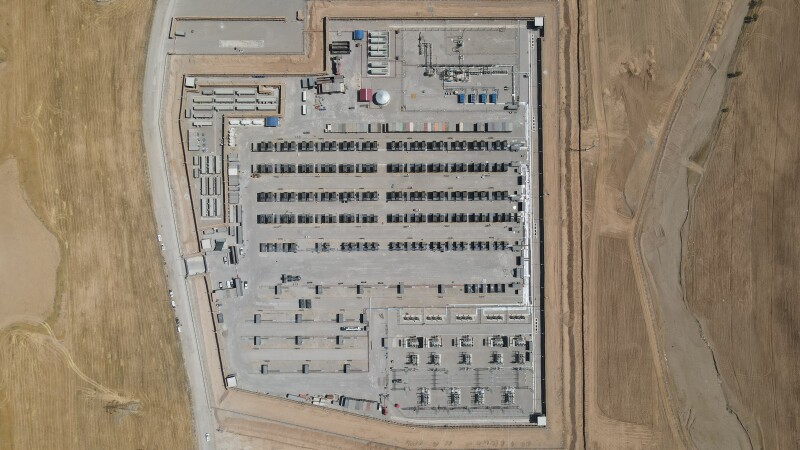Energy services provider Aggreko has completed commissioning of the largest flare-gas-to-power project in the Middle East to date at 165-MW capacity. The plant is situated on a 30-acre parcel near the Sarqala field, Garmian block, South East Kurdistan. The plant is run on approximately 40 MMscf/D of associated petroleum gas (APG) from the Sarqala field, saving 840 tonnes of CO2 per day, and cutting flaring by a third. The plant ran at full capacity for 72 hours in the project’s final site acceptance test, marking successful on-time, on-budget delivery, according to Aggreko.
Delivered over the course of 2020-2021 against the backdrop of the global pandemic, the project was conceived and executed in close collaboration with Kurdistan’s Ministry of National Resources (MNR) and Ministry of Electricity (MOE).
Aggreko also delivered a new 6-km gathering pipeline to transport the APG to the power plant and upgraded 7 km of 33-kV and 33 km of 132-kV overhead cables to new high-tensile, low-sag conductors in order for the local distribution grid to handle the new power plant’s full output. According to the MOE, the plant is the only station that produces electricity by the waste gas of the petroleum fields.
“Kurdistan’s Regional Government has been forward-thinking in looking for ways to capture and convert gas that would otherwise be flared to unlock production and power the local economy,” said Phil Burns, managing director for Aggreko Middle East. “We are extremely proud to have worked with the Ministries to deliver the Middle East’s largest flare-gas-to-power project to date, while upgrading the local infrastructure to the lasting benefit of the community and businesses it serves.”
The project is now contracted to run for 4 years, delivering continuous power. Built using 192 MW of modular gas generators, the plant can be scaled up or down in response to changing gas volumes.
The MNR has moved to eliminate the flaring of associated gas that is produced along with crude oil. An order last July gave producers 18 months to end flaring practices. However, this is not the first time that the MNR has attempted to end flaring. Back in 2019 a similar 18-month deadline to find alternative solutions to flaring was issued, but an extension was ultimately granted.


